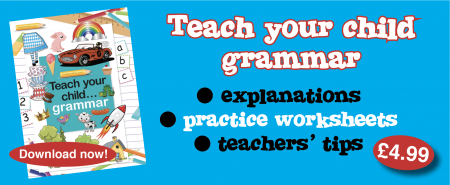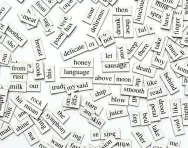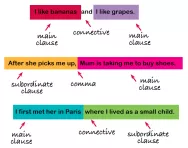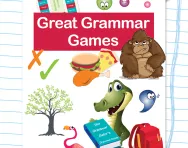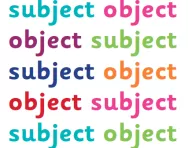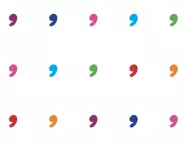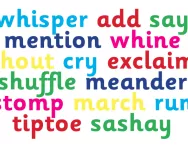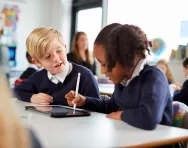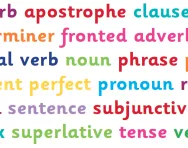Important update from TheSchoolRun
For the past 13 years, TheSchoolRun has been run by a small team of mums working from home, dedicated to providing quality educational resources to primary school parents. Unfortunately, rising supplier costs and falling revenue have made it impossible for us to continue operating, and we’ve had to make the difficult decision to close. The good news: We’ve arranged for another educational provider to take over many of our resources. These will be hosted on a new portal, where the content will be updated and expanded to support your child’s learning.
What this means for subscribers:
- Your subscription is still active, and for now, you can keep using the website as normal — just log in with your usual details to access all our articles and resources*.
- In a few months, all resources will move to the new portal. You’ll continue to have access there until your subscription ends. We’ll send you full details nearer the time.
- As a thank you for your support, we’ll also be sending you 16 primary school eBooks (worth £108.84) to download and keep.
A few changes to be aware of:
- The Learning Journey weekly email has ended, but your child’s plan will still be updated on your dashboard each Monday. Just log in to see the recommended worksheets.
- The 11+ weekly emails have now ended. We sent you all the remaining emails in the series at the end of March — please check your inbox (and spam folder) if you haven’t seen them. You can also follow the full programme here: 11+ Learning Journey.
If you have any questions, please contact us at [email protected]. Thank you for being part of our journey it’s been a privilege to support your family’s learning.
*If you need to reset your password, it will still work as usual. Please check your spam folder if the reset email doesn’t appear in your inbox.
Grammar in primary school
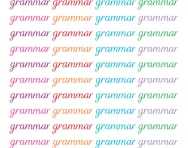
Confused about sentence structure? Not sure about verb tenses? Ask a primary-school child! Under the new, more advanced grammar curriculum introduced in September 2015, children are expected to identify parts of speech and write confidently using tricky grammatical concepts.
Grammar is knowing how the parts of a sentence work together and how sentences are linked to each other. For more information about how grammar is learned in primary school, read on.
Grammar in Year 1
Children learn to expand and connect the sentences they write by using the conjunction 'and'.
Prefixes are also introduced; children are shown that the prefix 'un-' changes the meaning of verbs and adjectives.
| Grammar objective | In other words... |
| Combining words to make sentences | Children need to learn to form a sentence (in their head or out loud) and write it down correctly. In Year 1 they learn to join words using 'and' (for example: 'There was ham and lettuce in my sandwich'.) and join clauses using 'and' (for example: 'We went shopping and we bought some food.'). |
Grammar in Year 2
By the end of KS1 children have been introduced to apostrophes (used in contracted words like 'can't' and for singular possession, 'the girl's coat'), suffixes and sub-ordinating and co-ordinating sentences.
| Grammar objective | In other words... |
| Understanding subordination and co-ordination | Children learn to use subordination in a sentence (where the connectives 'when', 'if', 'that' or 'because' are used and one clause is subordinate to another); for example: 'He couldn't give in his homework because he couldn't find it.' Co-ordination is when the connectives 'or', 'and', 'but' are used, for example: 'I wanted to go for a jog, but it was too hot.' |
| Using expanded noun phrases | A noun phrase is a phrase that contains a noun, for example: 'the dog'. Children are encouraged to use adjectives to expand their noun phrases, for example: 'the tired, hungry dog'. |
| Understanding sentence function (statement, question, exclamation or command) | Children are taught that a statement communicates a fact, a question allows you to ask something and ends in a question mark, an exclamation communicates anger, joy or humour and ends in an exclamation mark and a command is when you are telling someone to do something. |
| Using present tense and past tense | Children need to understand how to use the present and past tense and will be expected to keep the tense of their writing consistent. |
Grammar in Year 3
As they move into KS2, children learn to form more words using prefixes. They are also introduced to the present perfect verb tense ('I have eaten'), which indicates a completed action.
| Grammar objective | In other words... |
| Expressing time, place and cause using conjunctions, adverbs or prepositions | Connectives link sentences. In Key Stage 2 children learn to improve and enrich their writing by using as many connectives as possible.
|
Grammar in Year 4
In Y4 children are expected to use apostrophes confidently (including to indicate plural possession: 'the boys' coats'). They will also learn to enrich their writing with exciting noun phrases and vary their sentence structure with fronted adverbials.
| Grammar objective | In other words... |
| Using expanded noun phrases | Children learn to add to basic noun phrases with adjectives (for example, rather than 'the teacher', they might write 'the strict maths teacher with curly hair'). |
| Using fronted adverbials | Fronted adverbials are phrases or words at the start of the sentence that tell us how or why something is being done. They are usually followed by a comma. For example: 'Cautiously, the girl opened the door' or 'Last week, I got the highest mark in science'. |
| Using pronouns to avoid the repetition of nouns | Children learn not to keep repeating a noun, for example: 'He put his bag in the locker where he knew his bag would be safe.' is more elegantly written as: 'He put his bag in the locker where he knew it would be safe.' |
Grammar in Year 5
As part of the new curriculum children are introduced to modal verbs in Year 5. They are also encouraged to use relative clauses and link different parts of text by using adverbs or adverbial phrases.
| Grammar objective | In other words... |
| Identifying and using relative clauses | Relative clauses usually begin with the words who, which, where, when, whose or that. They add extra information to a sentence, for example: 'The maths teacher, who was about to retire, was very strict with his class.' |
| Indicating degrees of possibility in writing by using adverbs or modal verbs | When an outcome is uncertain, we can express it in a sentence by using adverbs (perhaps, surely) or modal verbs (might, should, will, must). |
| Using time connectives to help text to flow effectively | Time connectives such as then, after, firstly, later can be used to link sentences and paragraphs. |
Grammar in Year 6
Grammar learning in Y6 includes the active and passive voice, subjunctive verbs and identifying the subject and object in a sentence.
| Grammar objective | In other words... |
| Using the active or passive voice in a sentence to create different effects | 'People have counted the votes' can be changed to the passive: 'The votes have been counted.' |
| Using adverbials to add interest to writing | Sophisticated adverbials such as: on the other hand, in contrast, as a consequence can be used to join sentences and paragraphs within a text. |
How has the grammar curriculum changed?
Since 2016 children have been expected to work to much higher standards when it comes to grammar and punctuation, and they are introduced to fairly complicated grammatical concepts earlier in their primary-school learning journey.
- Sub-ordinating and co-ordinating sentences are used in Year 2 (previously they were introduced in Year 4).
- Modal verbs, subject and object and the subjunctive are given much more emphasis in the second half of KS2.
- Terminology has been updated to be in line with traditional grammatical vocabulary (connectives are now differentiated as conjunctions, prepositions and adverbs; progressive verb tenses are now known as continuous, complex sentences are referred to as multi-clauses sentences and definite and indefinite articles are looked at as determiners).
How is grammar tested in primary school?
Grammar terminology explained for parents
Find plain-English explanations of all the grammar concepts your child will be introduced to in primary school in TheSchoolRun's Primary grammar glossary.
